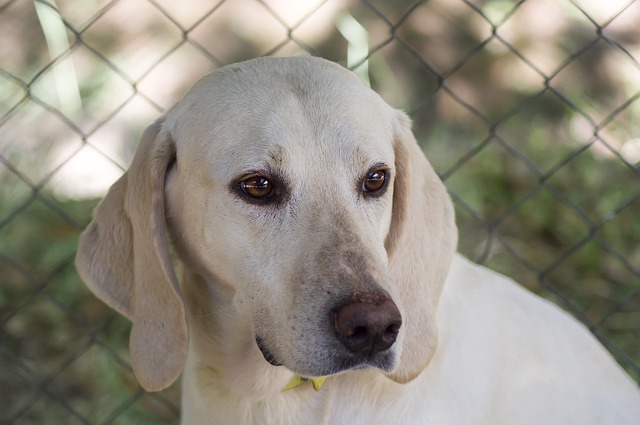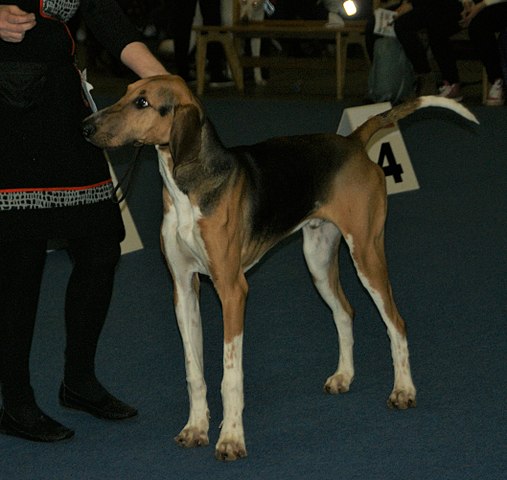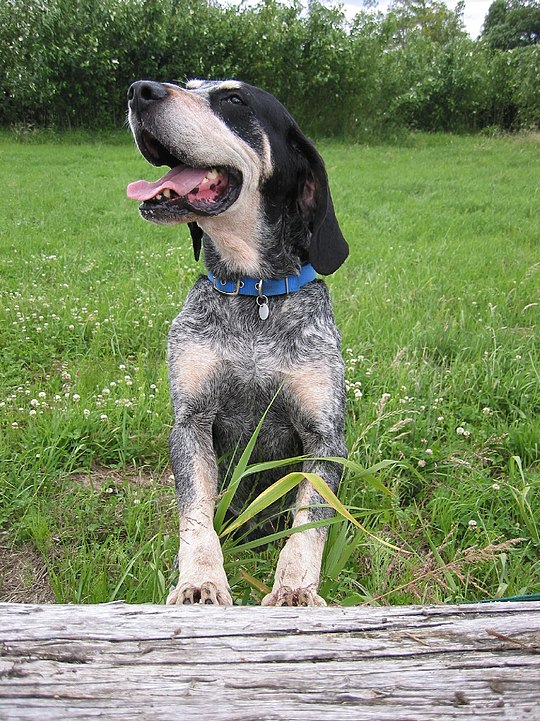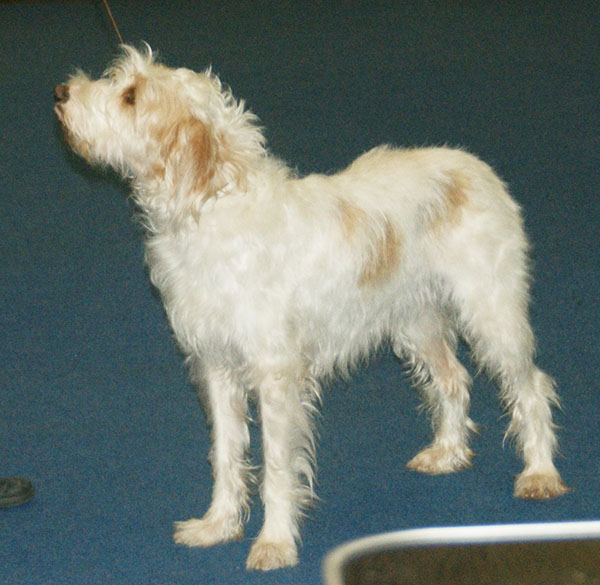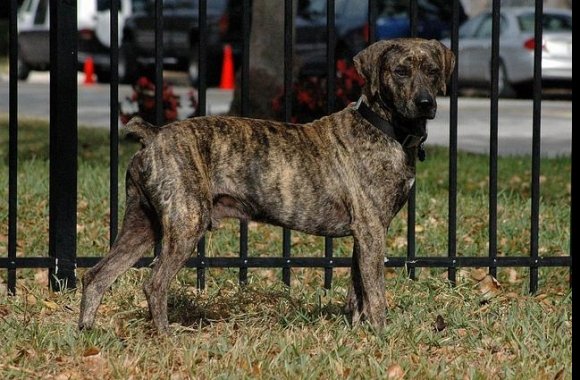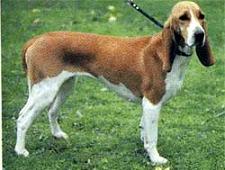Originally from Croatia, the Istrian Shorthaired Hound was bred to hunt both fox and hare. This old scenthound breed is at least 100 years old (probably much more) and highly regarded as an excellent hunting dog. As might be surmised, he is a cousin to the Istrian Coarsehaired Hound – a breed which is slightly taller and wirehaired but otherwise shares many of the same attributes. Today he is mostly found in Croatia and surrounding areas, almost always as a hunting dog rather than a pet. Although rare in the United States, he is recognized by the UKC.
Istrian Shorthairs are a small to medium sized breed, weighing from 35 to 40 pounds and ideally standing no taller than 19.5 inches at the withers. Their smooth coat is hard in texture and sits atop a muscular, slightly boxy body and long tapered tail. Color is either solid white, or white with lemon patches/ticking. The broad head has a fairly distinct stop and medium-length hanging ears. They only require moderate brushing in order to keep their coat in good condition, and just regular maintenance grooming (such as regular ear cleaning and the occasional bath) for them to look their best.
As they are fairly active, Shorthaired Hounds do best in homes with yards for them to run around in, in addition to a large amount of daily exercise. They are energetic hunting dogs that are best paired with owners experienced in raising scenthounds. This really isn’t a typical “family pet” type of dog, they do best in hunting households or at least households which can replicate a similar lifestyle with exercise and mental activities. They are capable of being calm in the home (with enough of a workout) but tend to do best living outdoors with lots of mental/physical stimulation. 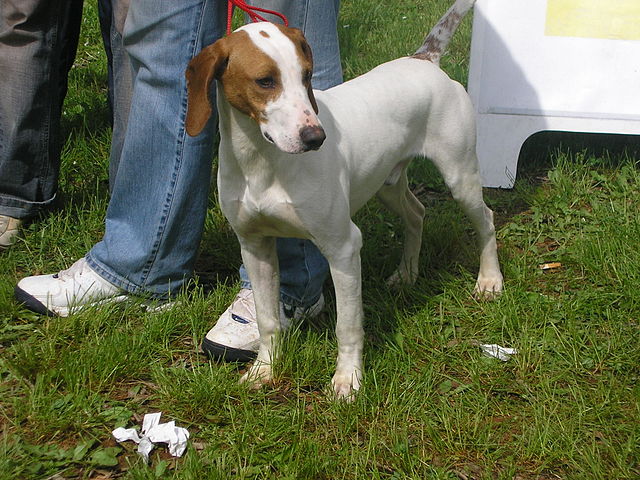
With their high prey drives, Istrian Shorthairs don’t always live peacefully with cats. They may or may not get along with other dogs. They also may not the best choice in homes with children as they weren’t really bred to be companion dogs (not that it can’t be done, but make sure to introduce early and be prepared for lots of supervision). Furthermore they are fairly loud (like many other scenthounds) which also makes them more suited as hunters than pets in most traditional homes. They certainly aren’t apartment, or even city dogs! Shorthaired Hounds tend to be devoted, gentle and loyal to their owners although are not overly-playful or excessively affectionate. They are happiest when their days are filled with plenty of outdoor fun! They are suspicious of strangers which means that socialization is extremely important in puppyhood. This said, they are not guard dogs.
The Istrian Shorthaired Hound is intelligent, steady and mellow in temperament but also independent. He is quite capable of all sorts of physical demands but may be a little slower to respond to obedience commands, particularly if he is engaged in any type of hunting when a command is given. As such, he requires plenty of consistency and extra proofing work around distractions. Furthermore he is prone to being overly assertive and will take control with a particularly lenient owner/trainer, so make sure to stay firm. He is trainable although may take a little longer and require a bit more work than the average dog. Make sure to start early with training and socialization for the best results!
The average lifespan of an Istrian Shorthaired Hound is between 13-14 years. For the most part a majority of these hounds are healthy although some issues, such as epilepsy and hip dysplasia, have been found in some lines. Most members of the breed are pretty hardy, however, and able to withstand the somewhat-harsh lifestyle that many hunting dogs are accustomed to. Ear infections or scrapes from hunting are the most common ailments. These are sturdy working hounds.

